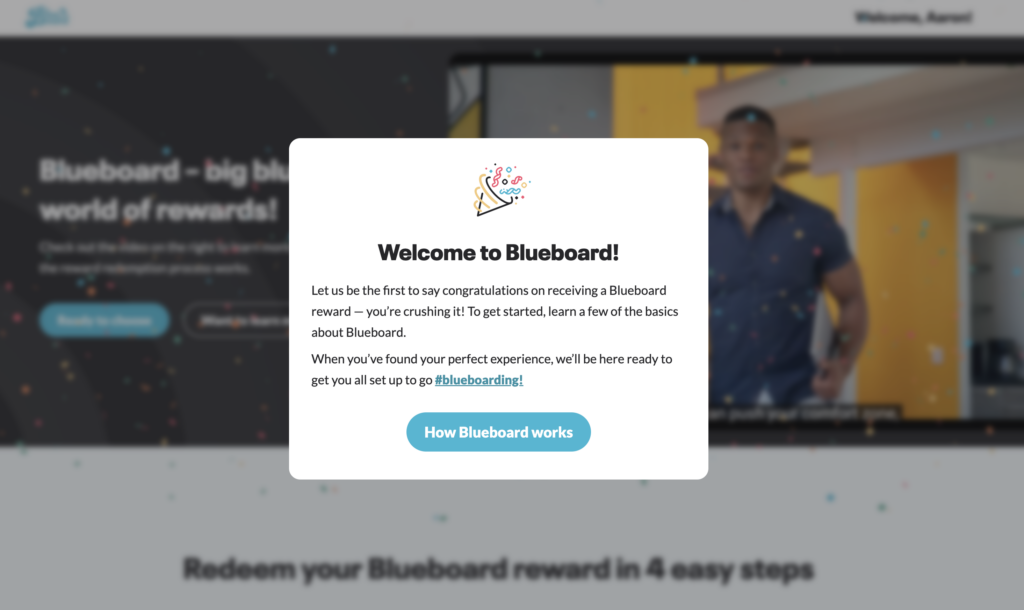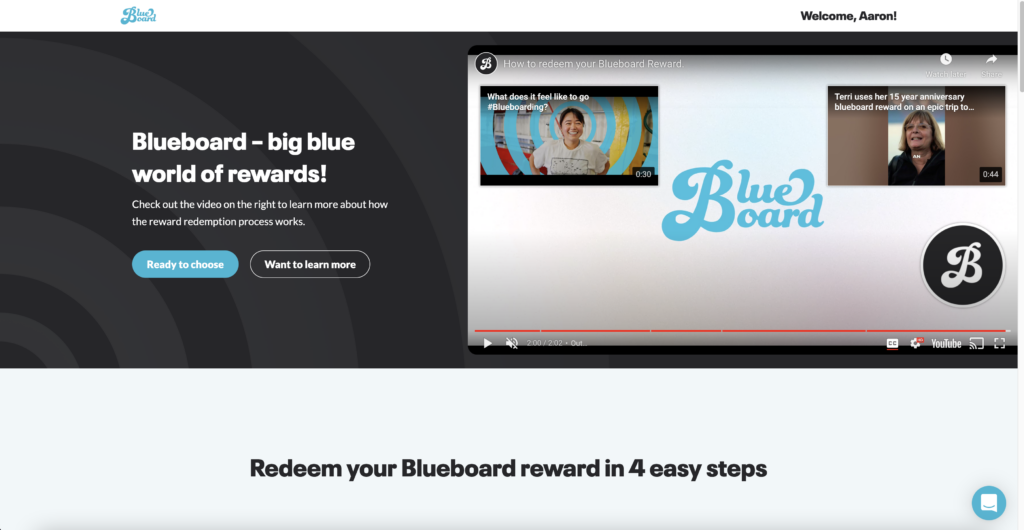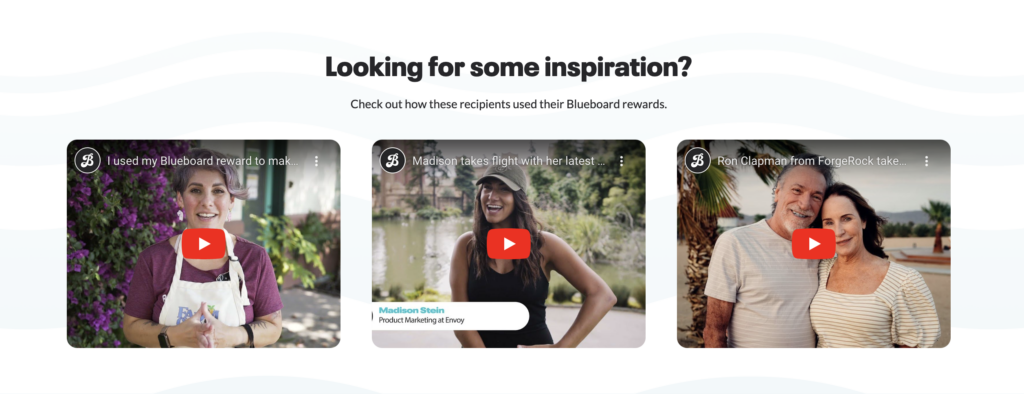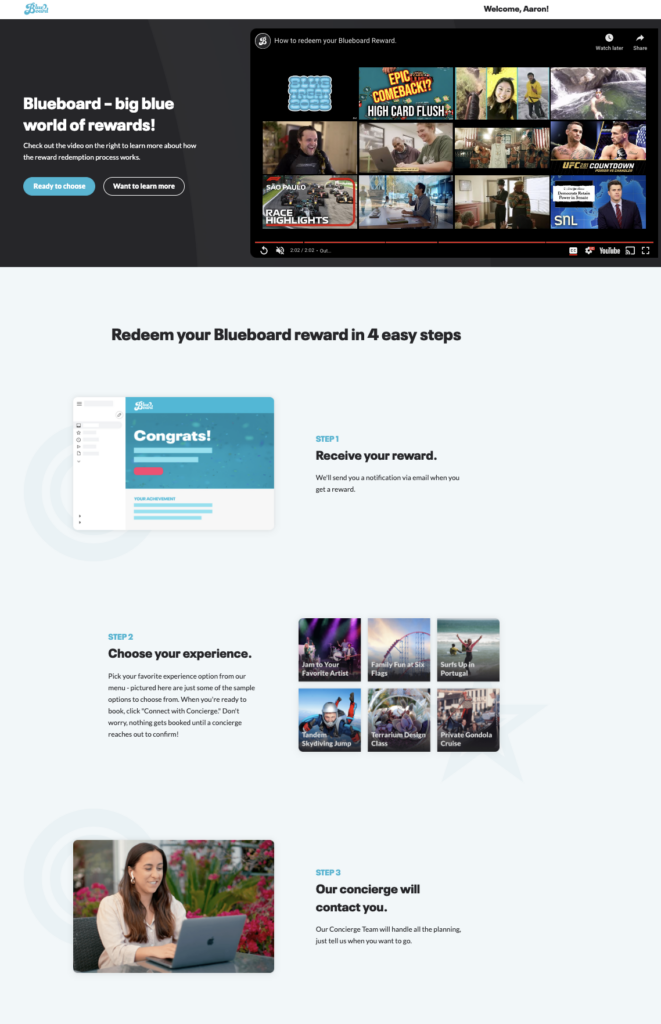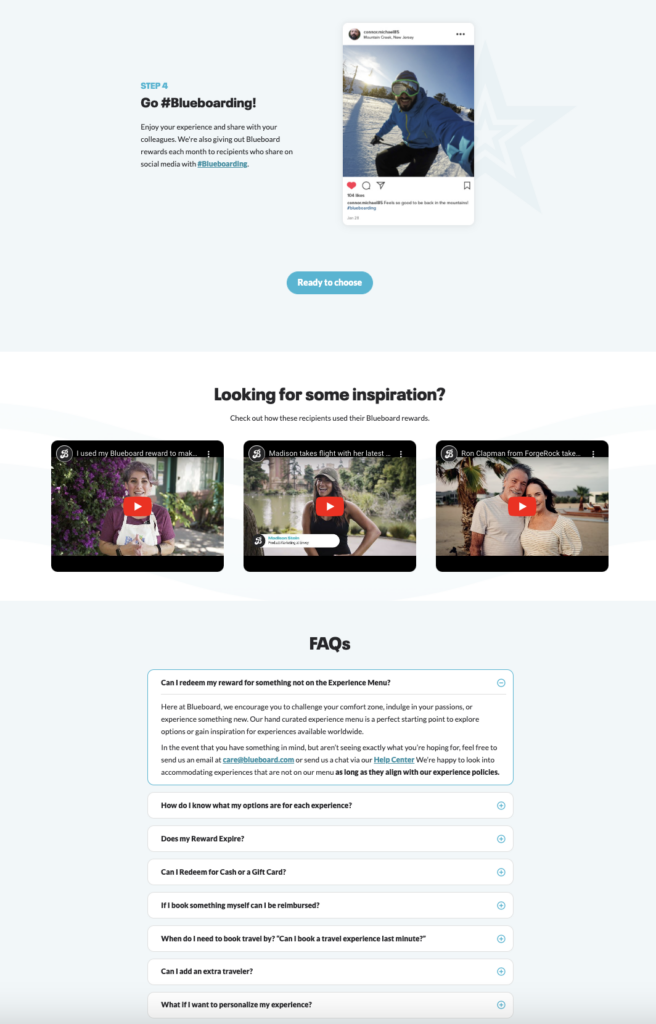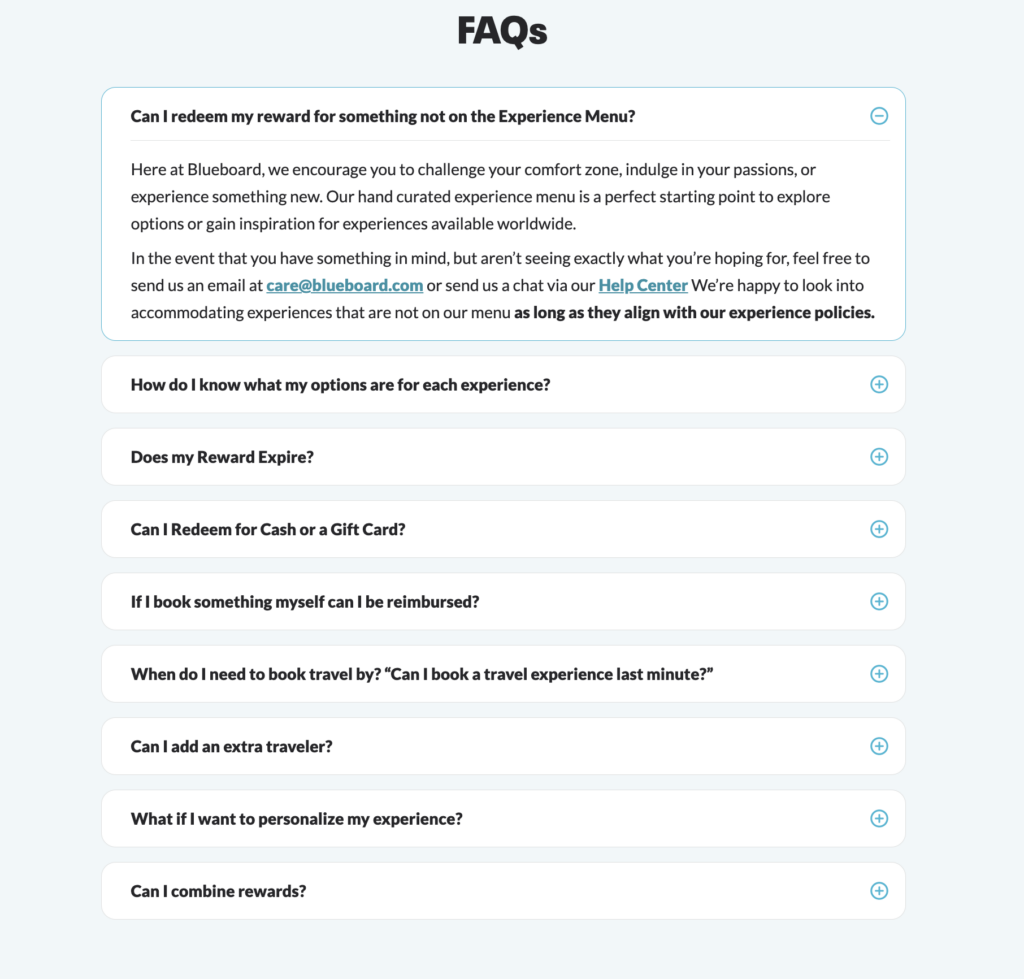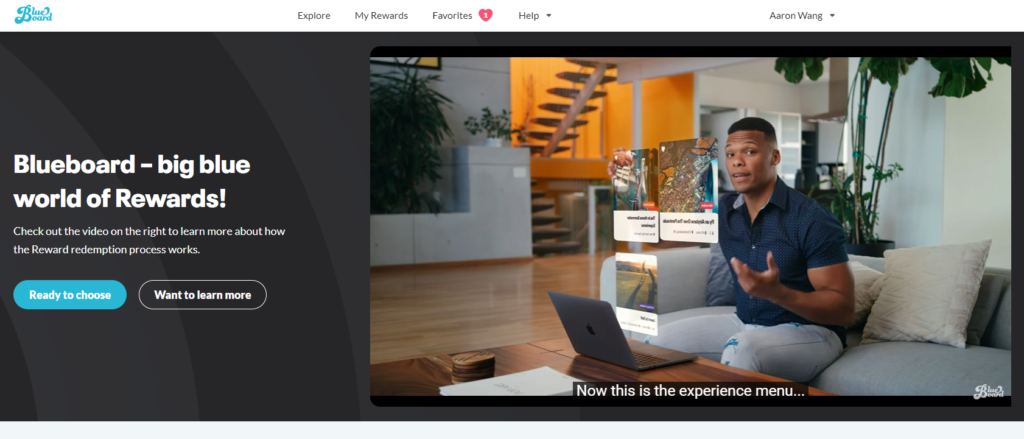
Problem: Users had no idea what Blueboard was. This was peculiar since, after all, Blueboard was usually the primary rewards and recognition program partnered companies had. Even if they knew what Blueboard was, they thought the reward redemption process was confusing and did not know what it meant to go on an experience.
Research: One gap was readily apparent. We only had one type of onboarding process and that was done at the initial implementation level. One of Blueboard’s implementation specialists would work with the HR admin to help them plan a successful rollout. This included email templates, marketing collateral, recorded webinars, and other “best practices”. Furthermore, after investigating recorded session data in LogRocket, we found users that were “aimlessly” clicking around and utilizing their mouse cursor to read fine print all over the platform. The bounce rate for this was pretty high after around 3-4 minutes, as you could probably assume. Lastly, we spoke to HR admins and employees to find a resounding theme: “I have no clue what to do.”
Solution: It was pretty clear. We needed a more intimate onboarding process for each individual user. The best way to accomplish this was by adding an onboarding page in the user journey to intercept users and inform them of the entire end-to-end reward redemption process. We compiled this into a simple 4 step process and coupled it with video content that highlighted what it meant to go #Blueboarding. We also tapped our inbound support team to compile data around help tickets, specifically around the use case of “I’m new to do this and don’t know what to do”. We broke down the ticket data and organized the comments to create an FAQ list that was specifically targeted to a new user and what types of question that persona would ask in that specific part of the user journey.
Outcomes: In the first 2 months post-release, we found an over 14% increase in conversions (redeemed rewards) year over year. While that was fantastic to start with, we were even more elated to see an immediate week-to-week reduction of 12% of inbound support tickets. Not only were we able to help drive conversions, but we were also able to do so with less friction. The weeks following saw a sustained 10-12% decrease from initial baseline support tickets across the two-month span, post-release.
